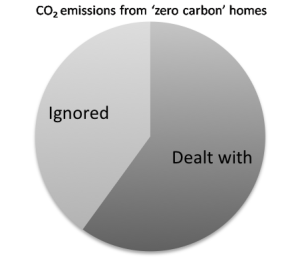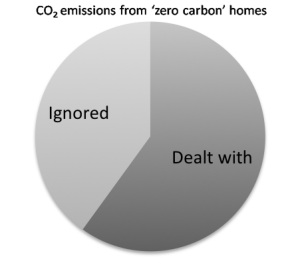When was the last time you read up on the Code for Sustainable Homes? A few years ago? Never? There is a lot of bad information floating around the planning world about how England is going to reduce carbon emissions through the Code for Sustainable Homes. For the uninitiated, the Code (for short) is a sustainable building standard for new homes and most planners (and planning inspectors) hold a lot of misconceptions about it.
Misconceptions abound because reducing carbon emissions from buildings costs money and everybody has something to say about it. But also because it’s a very technical area and not many planners have the background or time to question the information they receive on this topic.
There are a few key facts that you should know and share with your planner friends:
- Achieving set levels of the Code for Sustainable Homes is not mandatory for new homes in this country.
- Code level 6 is not a ‘zero carbon home’ as it is currently understood by the industry.
- The cost of achieving a particular rating under the Code is not standard across the country and must be assessed locally.
I’ll deal with each of the points above in turn.
Not mandatory
In England, achieving a particular level under the Code is not mandatory, unless a local planning authority requires this through their local plan. The Homes and Communities Agency has also made certain levels mandatory for the social housing they fund. Roughly half of English planning authorities require the Code in a draft or adopted core strategy / local plan. But this isn’t easy to do (see last section on costs).
So why do people think the Code is mandatory? The problem comes down to energy. It is widely known that the most expensive aspect of the Code for Sustainable Homes is energy. Therefore, this is the most discussed aspect of the code, leading people to think that the Code is just about energy. This isn’t true. There are a lot of other sustainability issues that the standard addresses (ecology, flooding, health and wellbeing, waste, etc.).
The Code rewards homes that are built to use less energy (and emit less carbon) than would normally happen through Building Regulations. The reward increases as carbon emissions are reduced.
The part of Building Regulations that deals with energy is set to catch up with the Code as we move toward our national target of zero carbon for new homes by 2016. For this reason, people have started saying that Code Level 5 (which requires a 100% emissions cut) will be mandatory by 2016. Let’s get this straight – Code Level 5 will not be mandatory. The minimum carbon reduction target in Code Level 5 could be the standard for new homes.
But all of this depends on the definition of ‘zero carbon homes’ and whether or not Department for Communities and Local Government keeps the Code for Sustainable Homes, both of which are unclear.
Code 6 is not a ‘zero carbon home’
Zero carbon has become a common term amongst planners but many of us don’t understand what it means. There is a lot of jargon – unregulated / regulated emissions, carbon compliance, allowable solutions, etc. The basic message that all planners should know is this. The current definition of a ‘Zero Carbon Home’ would actually only deal with roughly 60% of the carbon emissions from new homes (see simple graphic below).

Given that housing stock accounts for nearly 30% of the UK’s carbon emissions we are risking a lot by ignoring over half of the emissions. If we were to deal with 100% of the carbon emissions in newly built (and truly zero carbon homes) we would be achieving the carbon emission reduction target for Code level 6.
Cost estimates
In a recent blog post I talked about the recently published Harman report on sustainable building standards. Alongside that was the Harman report on viability and local plans. These reports state that standards to improve the sustainability of buildings have costs. And planners need to consider these costs in combination with the other costs of development. They need to show that it is viable to require a sustainable building standard. In other words, planners have to prove that the benefits of delivering a sustainable home have more value than the cost the developer and landowner bare to build it.
Unfortunately, when planners do this cost benefit analysis, they are not usually able to put a value on the decades of low carbon emissions and running costs that owners (and the planet) would benefit from whilst living in a sustainable home. The costs that planners do take into account are the estimated costs of achieving particular ratings under the Code for Sustainable Homes. These estimates are often taken from a report produced by DCLG.
If planners want to set high standards for sustainability in their local plans they need to produce local evidence about the costs and opportunities. Some parts of the borough may have cheaper land, allowing higher standards to be achieved. Some proposed developments may be very large, allowing for economies of scale on technology. There are a lot of variables and they need to be explored locally.


Interesting article, I would rephrase something though.
Your heading “Code 6 is not a ‘zero carbon home’” is a little inaccurate.
A Code level 6 home IS a zero carbon home, to current definitions and also past definitions.
However, the content of what you have written is correct. Therefore I would suggest that the heading should be “A Zero Carbon Home is not a Code Level 6 home”.
It will be possible to build a Zero Carbon home that is not a Code Level 6 home, but a Code Level 6 home will always be Zero Carbon.